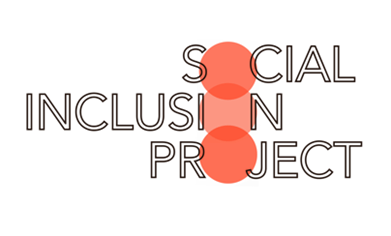
Global-is-Asian will feature a new series of articles drawing on the COVID-19 Policy Response in East Asia policy tracker by the Social Inclusion Project (SIP), Lee Kuan Yew School of Public Policy (LKYSPP), NUS.
SIP is LKYSPP’s research programme dedicated to analysing the role of public policies in creating an open, diverse and inclusive society, where people have opportunities for participation. Its activities aim to influence policy development, promote policy literacy and enable engagement.
Elimination and suppression
On 28 March 2022, Shanghai went into one of the strictest lockdowns China has seen in the last two years. Non-essential businesses were shut, mass testing was announced, and people were not allowed to leave their homes. China’s model of complete elimination and its attitude of zero tolerance against COVID-19 had attracted admiration in the early days of the pandemic. However, observers now ask if such an approach is still applicable. Singapore’s experience might provide an answer.
In an article published in The BMJ, Michael Baker and colleagues succinctly summarised the primary COVID-19 management strategies available to governments as either ‘elimination’ or ‘suppression’. The elimination strategy involves a quick escalation of stringent measures to end community transmission. In contrast, the suppression strategy aims to contain individual outbreaks through flexible, targeted interventions.
Singapore’s ability to switch between these two strategies, depending on the prevailing conditions, has been its strength.
Tactical actions
In the beginning when Singapore reported its first case on 23 January 2020, the government’s approach was incremental.
Travel restrictions and quarantine orders, for instance, were progressively imposed over many months and were eased when required, depending on global pandemic conditions. A blanket ban or quarantine requirement was not imposed despite the uncertainty surrounding the science behind the virus.
It was only in April 2020 when the virus surged in the migrant worker dormitories and a more dangerous delta variant was confirmed that the government imposed a nationwide lockdown.
Being a small open economy, Singapore’s appetite to bear a complete travel ban and lockdown is much lower than, say, China, which has a large domestic market. Therefore, its two-month lockdown, known locally as the Circuit Breaker, was implemented only once as its elimination strategy. It was accompanied and succeeded by the strict implementation of non-pharmaceutical interventions (NPIs) when knowledge about transmission and fatality was lacking. From April 2020, masks were compulsory in public spaces. Social distancing, regular testing and group size caps were imposed throughout the pandemic. Some interventions such as group size restrictions were calibrated in phases.
After June 2020, as transmission slowed down and daily case counts fell, the approach returned to suppression. For instance, a complete closure of all schools was not implemented again from July 2020. Only schools with confirmed cases or suspected clusters were required to close for brief periods. Travel restrictions were also eased with the launch of dedicated travel bubbles with partnering countries.
In 2021, as vaccines became available and the vaccination rate increased, the restrictions were further relaxed. Initially, reciprocal green lanes and air travel passes were provided for business and official travel. Later, new vaccine travel lanes allowed seamless travel with minimal testing requirements. Domestically, testing and tracing regimes remained strict and regular but quarantine and closures were more targeted. Vaccine availability and take-up were closely monitored, and they impacted Singapore’s stance towards pandemic management.
Watch, learn and switch
Singapore avoided marrying itself to one single strategy and switched between the two as needed. Interventions were delivered by a strong public healthcare sector and competent political leadership.
With vigilant monitoring of infections, Singapore was able to constrain the cumulative death rate per million individuals to 155, as compared to 611 in Denmark and 1,538 in Sweden. Among its Asian neighbours, Singapore’s case fatality rate, which is the number of confirmed deaths among confirmed cases, has been the lowest: 0.29 compared to 0.9, 1.6, and 4.7 for South Korea, Hong Kong, and Taiwan, respectively. Nevertheless, the definitions of COVID-19 deaths vary. Taiwan, for example, regards the death of any patient with COVID-19 as a COVID-19 fatality count, in contrast to Singapore’s approach of counting only those who are killed by COVID-19.
Singapore’s fiscal policy has also cushioned its economic downturn. The GDP contracted by 5.4 per cent in 2020 but expanded by 7.2 per cent in 2021. The Consumer Price Index grew by 3 per cent between 2019 and 2020 but inflation slowed down to 0.9 per cent between 2020 and 2021. Though there was a decline in exports from S$533 billion in 2019 to S$516 billion in 2020, it bounced back at S$614 billion in 2021. The resident unemployment rate increased to an all-time high of 4.8 per cent in September 2020 but fell back to 3.4 per cent by September 2021. The overall unemployment rate remained below 3 per cent in 2021. But unemployment may yet be a daunting issue once the temporary job support schemes expire.
The lesson from Singapore is that pandemic management requires systemic agility. Policymakers must respond to local conditions such as domestic market size and healthcare system resilience, as well as global pandemic developments such as new variants and vaccine availability. Singapore’s strength in governance lies in its agility in managing crises like the pandemic. The Singapore model proves the point that experts have long insisted; allegiance to a one-size-fits-all strategy does not solve problems.